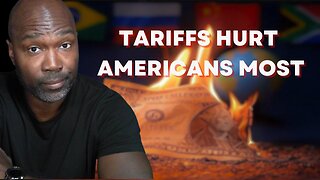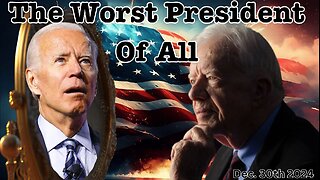Premium Only Content

Social Trust In Australia, UK & USA (1-6-21)
Broken societies: Inequality, cohesion and the middle-class dream: https://lukeford.net/blog/?p=142699
‘There is no evidence that the ethos of a people can be changed according to plan. It is one thing to engineer consent by the techniques of mass manipulation; to change a people’s fundamental view of the world is quite a different thing, perhaps especially if the change is in the direction of a more complicated and demanding morality’. (Edward Banfield in 1958)
Christian Larsen writes in 2013: The intriguing finding is that the share of ‘trusters’ has decreased dramatically in the US and UK. In 1959, 56 per cent of British respondents said that most people can be trusted; in the latest World Value Survey, this figure was down to 30 per cent. In 1960, 55 percent of Americans said that most people can be trusted; now it is 35 per cent. In Denmark and Sweden, by contrast, the share of ‘trusters’ has increased.
What Is Social Cohesion? https://lukeford.net/blog/?p=142679
* I suggest that we define social cohesion as the belief held by citizens of a given nation-state that they share a moral community, which enables them to trust each other… The very discussion of social cohesion often implies its absence and, even more specifically, the decline of social cohesion. I suggest that we label the decline of social cohesion “social erosion”, which we then can define as fewer citizens in a given nation-state having the belief that they share a moral community that enable them to trust each other…
* In a modern globalized and multicultural world, it is difficult and problematic to cultivate a similarity of mind.
National identity & social cohesion: https://lukeford.net/blog/?p=142671 * [Hans] Kohn’s distinction had its roots in Meineke’s (1970[1907]) distinction between “staatsnation” (state nation) and “kulturnation” (culture nation). Kohn’s basic argument was that in Western Europe (his examples were France, the UK, The Netherlands and Switzerland), the borders of the state were settled prior to the rise of nationalism, which created a strong focus on the new democratic procedures that could legitimize the existing state. Nationalism therefore contained a narrative about turning oppressed inhabitants into citizens. In a less positive interpretation, Tilly calls it a “state-led nationalism” where “rulers who spoke in a nation’s name successfully demanded that citizens identify themselves with that nation and subordinate other interests to those of the state” (Tilly 1994:133). In contrast, the borders in Eastern Europe were settled after the rise of nationalism, which created a strong focus on the ethnic/cultural dimension of nationhood. Tilly calls it “state-seeking nationalism” where “representative of some population that currently did not have collective control of a state claimed an autonomous political status, or even a separate state, on the ground that the population had a distinct, coherent cultural identity” (Tilly 1994:133). Kohn used the terms “Western” and “Eastern” both to denote the geographic locations of the various ideas of the nation (Kohn drew the line between the area west of the Rhine and the areas east of the Rhine) and to denote two different ideal types of perceptions of nationhood.
-
 51:57
51:57
Dad Dojo Podcast
1 hour ago $0.35 earnedEP15: The Bronny James Debate 2
3.55K -
 10:53
10:53
Rethinking the Dollar
18 hours agoTariffs Won’t Save the US Dollar
3.01K18 -
 30:40
30:40
BonginoReport
3 hours agoHow Based Gen Z Men Are Shaping the New Right: Evita + John Doyle (Ep.111) - 12/30/2024
40.2K31 -
 LIVE
LIVE
Wendy Bell Radio
5 hours agoThe Worst President Of All
13,030 watching -
 1:50:03
1:50:03
Jeff Ahern
2 hours ago $0.83 earnedMonday Madness with Jeff Ahern (6am Pacific)
12.1K -
 2:54:24
2:54:24
Fed Reacts
15 hours agoFormer Fed Explains Lil Durk's Second Murder For Hire
112K31 -
 44:13
44:13
barstoolsports
21 hours agoThe Shred Line with Coach Gruden, Dave Portnoy and Steven Cheah | Week 17
184K17 -
 2:24:54
2:24:54
WeAreChange
17 hours agoTrump Sides With Musk On Visas! MAGA Base ENRAGED??
136K104 -
 2:04:26
2:04:26
Nerdrotic
17 hours ago $38.99 earnedThe Program: The Government's UFO Cover Up Programs | Forbidden Frontier #085
103K29 -
 2:13:07
2:13:07
vivafrei
20 hours agoEp. 243: HOLIDAY SPECIAL! The Great H1B Visa Debate! Jay z Gets Scorched! Attack in Germany! & MORE!
179K380